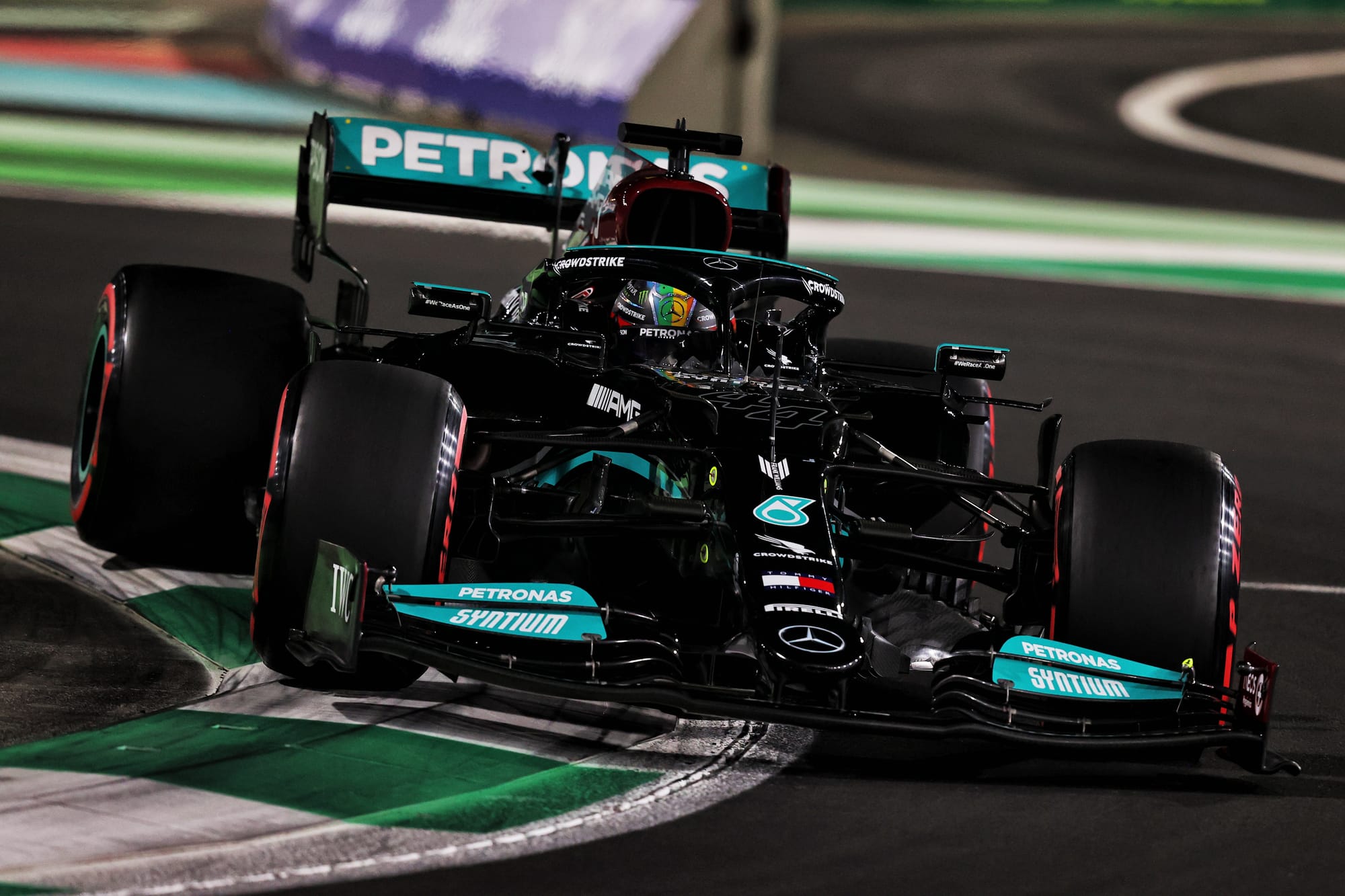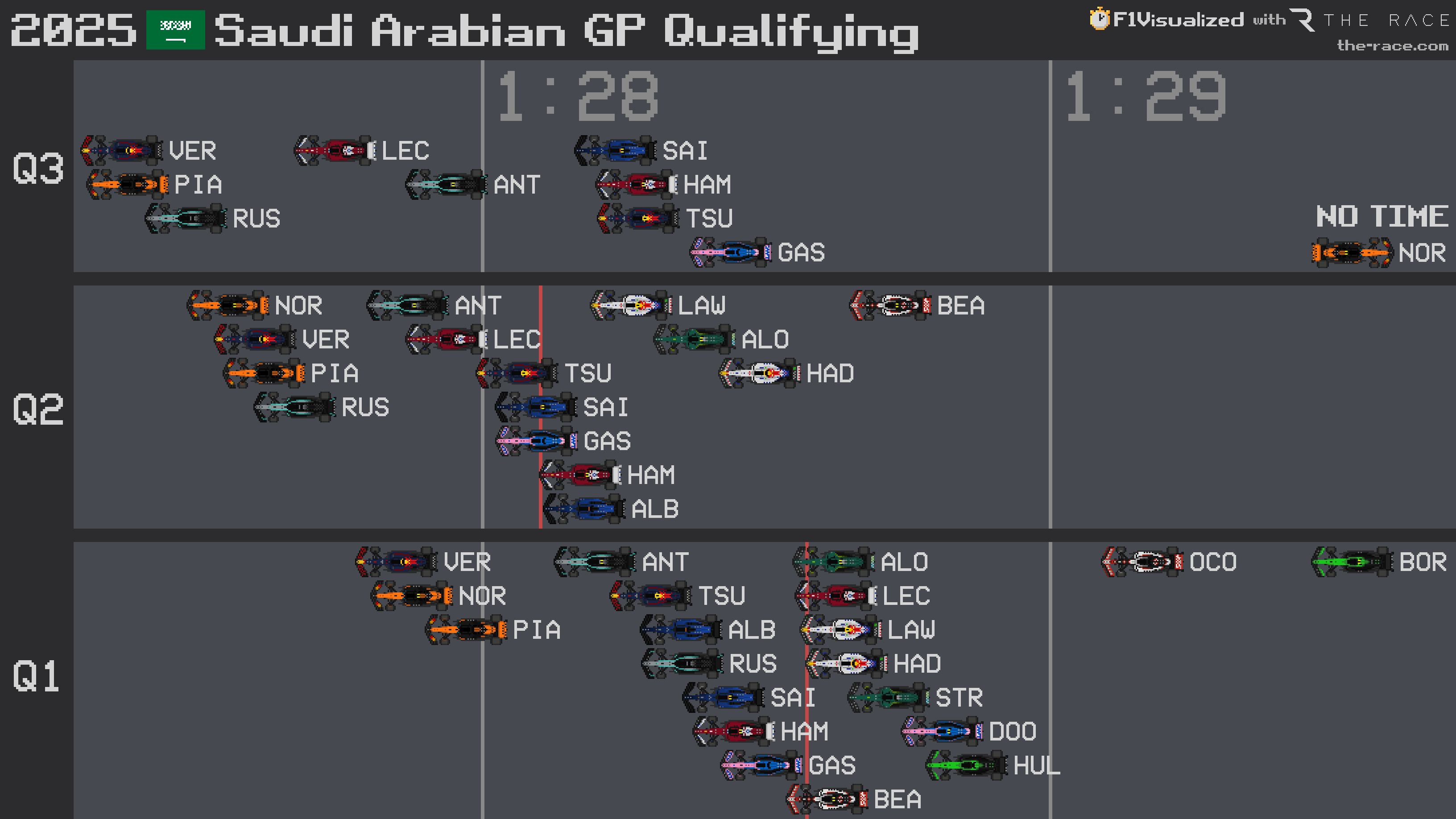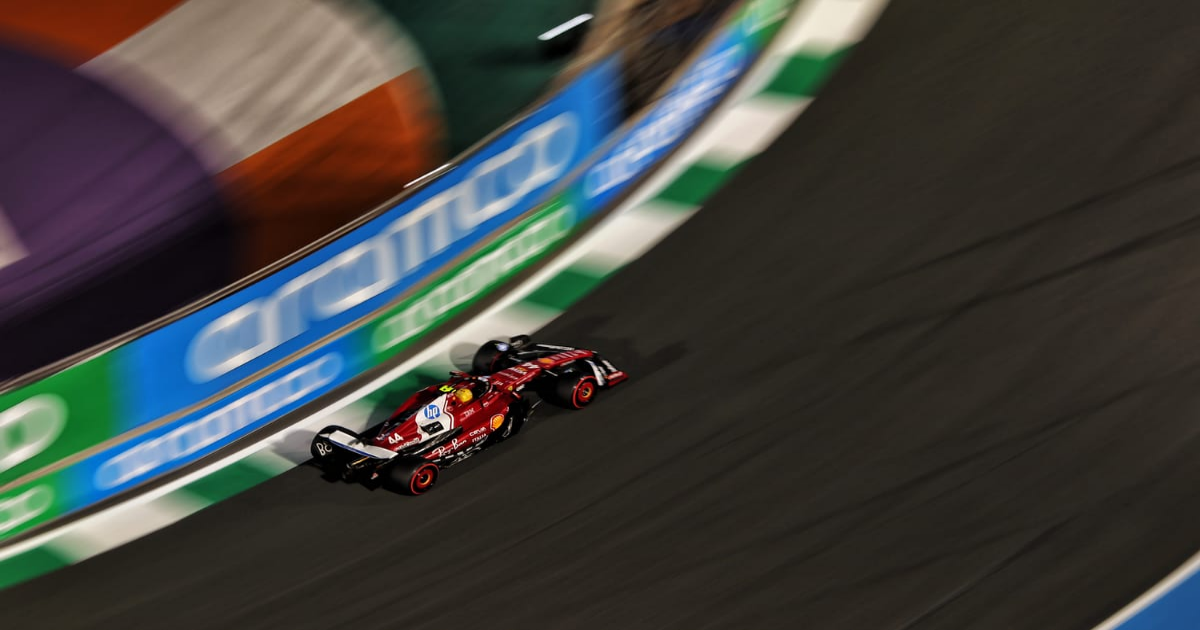Lewis Hamilton started the Saudi Arabian Grand Prix weekend optimistic of a breakthrough in his first Ferrari Formula 1 season thanks to “changes I made to my driving style” in the middle stint of the race in Bahrain.
That initial positivity melted away in the Jeddah heat of a difficult Friday practice, which was followed by an underwhelming qualifying session as Hamilton admitted he is “just not gelling with the car”.
Worse than that, Hamilton also implied his experience suggested that what he learned in Bahrain wasn’t the foundation for a potential breakthrough at all.
It’s important to note that Hamilton said this shortly after qualifying finished, a time when he’s understandably not at his most positive or analytical after poor performance, but it’s clearly frustrating him.
“Well, I was feeling positive, obviously, after the last race and hoping that I could apply some of those things, but it’s not worked,” said Hamilton when asked by The Race about the technical changes.
“Back to the drawing board and keep working.”
This pattern of weekend has become all too familiar for Hamilton since the early high of his victory in the China sprint. In Saudi Arabia, he was at least “happier” with the car in qualifying than he was in practice, but it was still far off where he wants it to be. While just as in Bahrain, Hamilton can be expected to be stronger in the race, he continues to find the Ferrari a tough nut to crack.
Hamilton’s qualifying performance wasn’t his worst of 2025 (that came in Bahrain a week ago), but it wasn’t far off. He was seventh-fastest, three places and 0.531 seconds slower than team-mate Charles Leclerc.
It was another qualifying session in which any faint flickers of promise were rapidly extinguished. Hamilton outpaced Leclerc in Q1, although this was thanks to his team-mate not improving on his final run, then ended Q2 0.236s behind and only scraping into the top 10 thanks to the 0.007s advantage he had over Williams driver Alex Albon.
The first run in Q3, on used soft tyres for both Ferrari drivers, was interrupted by the red flag caused by Lando Norris’s crash. While Leclerc shaved two tenths off his Q2 time on the crucial final run, Hamilton was a tenth slower than what he’d achieved.

Asked why he was, in his own words, “lacking a lot of pace”, Hamilton had a simple answer.
“[It’s] just me,” he said. “Just not gelling with the car at the moment.”
The broader problem is clear and it’s not solely about the move to Ferrari given the problems were evident in 2024. Hamilton struggles to get the most out of the car when on the limit in qualifying trim, which usually manifests itself as pushing too hard in corner entries. There were other problems in qualifying in Saudi Arabia, but as he put it: “Q3 laps are pretty poor, that’s my worst laps at the moment, so I need to work on that”.
This is where perhaps his dismissal of the lessons learned in Bahrain might have been premature. Speaking on Thursday, he was adamant those were not track or conditions specific and could apply globally.
“I think it’s applicable,” he said when asked by The Race if he believed what he learned would be generally applicable to his driving. “If you look at my driving style, particularly back in 2020, 2021 and before, it worked well with that genre of car.
“This driving style, maybe the others already have it and I know Charles has had it since he’s been here for some years, is just new. It’s like, naturally, when the pressure comes, builds up, and you need to really pull out that extra bit of time, you can easily fall into your old ways.”
Hamilton’s old ways, which worked phenomenally well, can be summed up as a tendency to brake late and hard, loading up the front tyres as the car pitches forward, introducing the car to the corner fractionally before he has to, then using the rear rotation to help turn the car without it over-rotating into a slide. It’s a difficult style to perfect, but one where Hamilton’s precision and feel allowed him to thrive.

The current generation of ground effect cars run low, with very limited ride height movement because of the need to hold the car in the right window aerodynamically, and don’t respond well to this style of driving. That played a part in a gap that appeared to be more like two-to-three tenths early in qualifying ballooning.
With Leclerc among the fastest to adapt to the challenges of these cars, modifying his braking style immediately, something that then-team-mate Carlos Sainz took some time to get his head round in the first half of 2022, Hamilton is going through a process that his team-mate has long since nailed. To complicate that, he’s having to adapt to using Brembo brakes having long used Carbon Industrie products at Mercedes.
There have been other problems this weekend. On Friday, Hamilton’s minimum speed was lower than Leclerc’s in the majority of corners – in some cases markedly. On their Q3 laps, it was in the fifth-gear Turn 4-5 and the long left-hander at Turn 13, which Leclerc took and fifth while Hamilton dropped to fourth, where that was most clear today. And there have been signs all weekend that in the fast sweeps, Hamilton still isn’t as confident as Leclerc is with a car that carries a little oversteer.
All of this adds up to a steady loss of laptime to Leclerc across the lap attributable to a combination of reasons. It’s no surprise that Hamilton is still struggling. He’s changed teams, is alongside a phenomenally fast team-mate in Leclerc and having to adapt to different ways of working, subtly different driving tools – including the way Ferrari uses engine braking dynamically – and while he says he’s now banked the knowledge of what’s in the toolkit and the effect it all has, the detail work of refining takes time.
While Leclerc worked through a series of what he called “extreme” set-up experiments and has got the car working adequately balance wise, albeit still lacking pace, Hamilton still has work to do. This relates both to how he’s driving and the car, in terms of set-up and required upgrades.
Inevitably, Hamilton is frustrated. It’s one thing to understand it will take time – more than five race weekends certainly – to fully adapt and quite another for a fiercely competitive character to go through that frustrating period.
Add to that the very real concern that the characteristics of the heavy ground effect cars play against a style where he used the opportunity presented by his incredible sensitivity to build his advantage, and you can understand why it’s so difficult.
“We’ll keep working,” said Hamilton. “No matter what, I try. I’m a long way off, but we don’t give up. We just keep trying.”

Any driver would be concerned with the gap of just over half-a-second Hamilton has had to his team-mate in qualifying in Bahrain and Saudi Arabia. But with the stylistic challenges, the need to adapt, the lack of confidence and the time required to build ever-more familiarity with the array of tools available to refine the car dynamics, that’s time that can melt away as things come together.
If Hamilton gets to halfway through the season and this pattern is continuing to characterise his weekends, that’s the point at which bigger questions have to be asked. For now, this is still about the unavoidable growing pains of his new partnership with Ferrari.
And Hamilton will be hoping that his comment to F1 TV about potentially being stuck in his ways and struggling ever to change is nothing more than a throwaway remark, especially given he also pointed to the inconsistency of the car’s responses as another part of the problem.
“I might be just so stuck in it that it’s never going to change,” said Hamilton “I couldn’t work any harder and I’m trying to implement things that I’m seeing and do it on track. The car’s reacting differently every time you go out, so that’s definitely challenging.”



